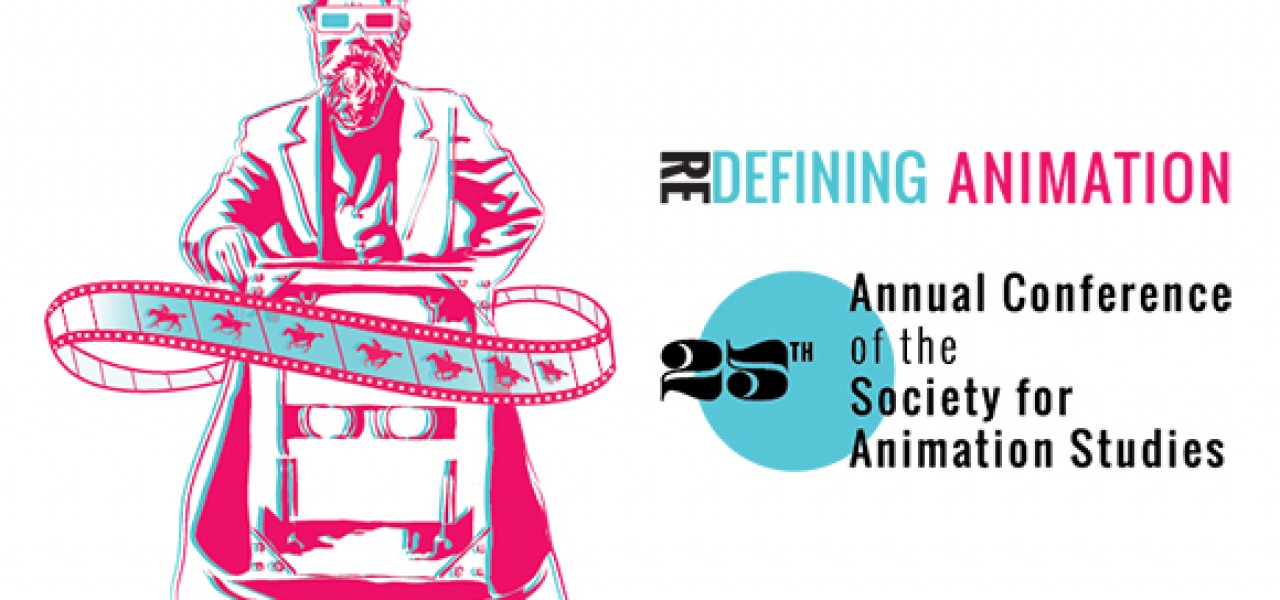
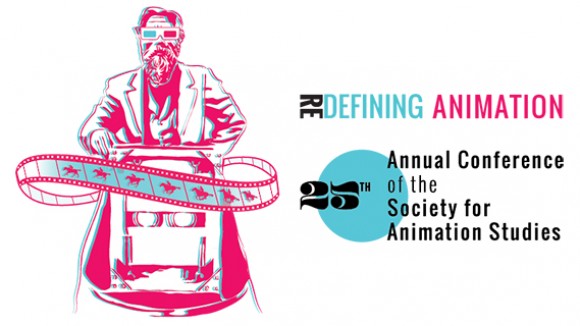
Report: Society for Animation Studies Conference Focuses on Redefining Animation
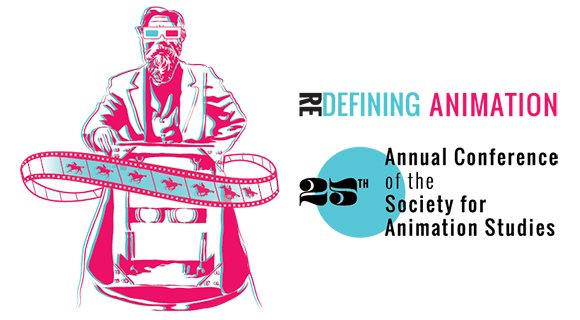
Besides creating animation, I love to study it theoretically. The process of creation for me is very ‘un-graspable’. There’s so much to take into consideration at once, so many different elements that are at work in the same timeframe. Theory on the other hand is very concrete. It gave me a place to start with my graduation film two years ago and something to hold onto until now, at the point where I’m finished up. Writing a paper while making the film gave me something to base my creative descisions on.
I graduated with a decent version of the film, Flashing By, and with the completed paper, “Pushing the Background To the Front,” but I didn’t feel like I was done with the topic. I wanted to talk more about my findings and thoughts with others scholars. The perfect opportunity arose: a call for entries from the Society for Animation Studies conference, which would take place at the University of Southern California, Los Angeles, in the summer of 2013. I submitted my paper and, much to my surprise, it was selected. So last month, I travelled from Amsterdam to Los Angeles to present my thesis, receive feedback and dive into the field of animation theory.
The Society for Animation Studies, or SAS, is an organization dedicated to the study of animation history and theory. Thanks to a small but devoted team, the society publishes peer-reviewed papers online, holds an online directory of animation theorists and organizes the annual conference. Every year the event is held in a different part of the world to allow as many people as possible to participate.
Three days of talking theory kicked off with a set of four 20-minute paper presentations, including mine. Yikes! A bit nervous, I set out my thoughts on the use of mise-en-scene in the 2D animated short for an audience full of professional theorists. There was nothing to be afraid of though – everyone listened attentively (or faked it extremely well), was genuinly interested and had great questions during the Q&A. Even during the following days people would come up to me with compliments, thoughts of their own or simply for a chat.
Getting my own talk over with so early allowed me to relax and enjoy the rest of the conference. There were studies about specific events in history, ideas for new platforms, talks on technical and creative aspects of animation, and tributes to animation professionals and studios. Topics ranged from calligraphy-inspired animation to the history of CGI, and from differences in development between animation and live-action to social issues in the animation community. Most talks were good, several were fantastic, others were really vague, unprepared and quickly forgettable. But I guess that’s what you get with around 80(!) presentations, which is a large number in the relatively small and new field of animation theory.
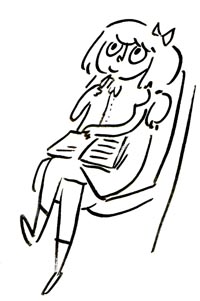 This year’s theme was very broad: ‘Redefining Animation.’ Of course, several presentations were dedicated to the trend everyone’s discussing nowadays: stereoscopy. Theorist Ann Owen’s research from a neuroscientific perspective offered some fresh and legitimate insights into the already much-discussed topic. Owen laid out a connection between the human need to relocate oneself in every new environment he’s in, and how he feels that need also when watching film. Only after the viewer manages to relocate himself is he able to follow the characters and their actions. Knowing this, it is only logical to understand it takes even longer for the viewer to relocate when watching a stereoscopic film. Therefore, Owen argues, stereoscopy can add something to a film, instead of just being a distraction, only if the shots give the viewer enough time to relocate. As we all know, most of the 3-D films we see do exactly the opposite. Owen concludes with what stereoscopy can do well: provoking a desire to explore the space visually and making the viewer want to touch what’s on the screen.
This year’s theme was very broad: ‘Redefining Animation.’ Of course, several presentations were dedicated to the trend everyone’s discussing nowadays: stereoscopy. Theorist Ann Owen’s research from a neuroscientific perspective offered some fresh and legitimate insights into the already much-discussed topic. Owen laid out a connection between the human need to relocate oneself in every new environment he’s in, and how he feels that need also when watching film. Only after the viewer manages to relocate himself is he able to follow the characters and their actions. Knowing this, it is only logical to understand it takes even longer for the viewer to relocate when watching a stereoscopic film. Therefore, Owen argues, stereoscopy can add something to a film, instead of just being a distraction, only if the shots give the viewer enough time to relocate. As we all know, most of the 3-D films we see do exactly the opposite. Owen concludes with what stereoscopy can do well: provoking a desire to explore the space visually and making the viewer want to touch what’s on the screen.
A less-discussed trend brought up in another presentation is the crossover of live-action and animation film practices. We all know that the boundaries between live-action and animation are becoming harder to define. Tom Klein approaches this subject not by trying to define a boundary but instead shining light on what he calls ‘the mind-game film.’ According to Klein, the possibility to apply best practices of other media (like Rango used natural acting conversations and Mission: Impossible—Ghost Protocol removing live-action frames as animation would do) has led to challenging, innovative storytelling. Klein notes that those ‘mind-game films’ that make use of other media’s possibilities are becoming increasingly popular with the general audience. Both Life of Pi and Cloud Atlas would be considered arthouse films though they gained great populairity with the general audience. Will this trend continue? Klein leaves that question open and promises to come back with an answer at a future edition of the conference.
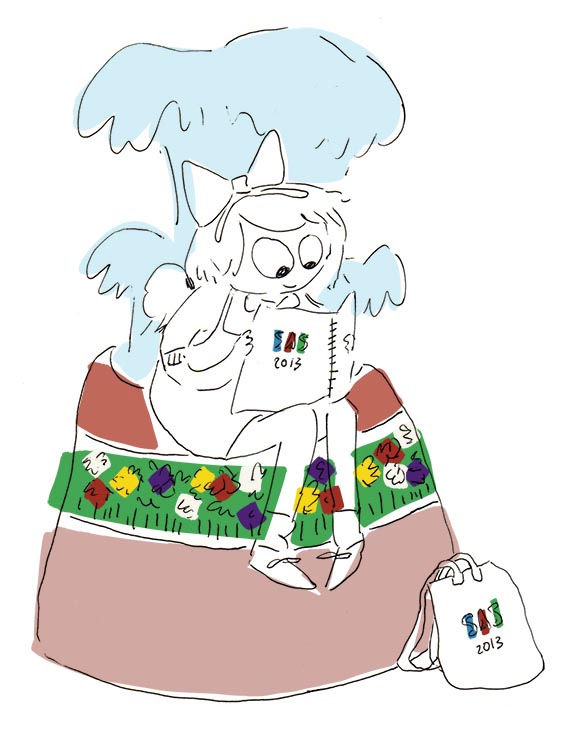
But perhaps the most fundamental brain-picking regarding this year’s theme was, nicely enough, done by SAS’ co-founder Harvey Deneroff. He states that personality animation began with the drawn animations of Winsor McCay, was further developed by Otto Messmer, and fully realized at Disney during the sound era. So for a long time 2D has been central to history books, schools and the industry, even though stop-motion is as old as 2D, and CGI is extremely present in today’s landscape. Underappreciation for each others’ artforms is as know to the history books as it is to the animation industry, Deneroff acknowledges sadly. The recurring effort to define the medium pushes artists into camps. But if there’s one way to describe art of the 21st century it would be the constant blending of different techniques, fields and media. That’s the strength of animation. It has the ability to constantly redefine itself, to evolve. “People who practice the medium define what the medium is,” couldn’t be more true when it comes to animation. Deneroff’s talk was based on research he and his wife are doing for a book called The Social Life of Filmmakers – how could anyone not look forward to a book with a title like that?
Inbetween the paper presentations, established artists flew in for the daily keynotes. Michael Fink (The Golden Compass, Blade Runner) showed us art history through his eyes as a visual effects supervisor, and made us realize technique has always influenced and perhaps even determined new creative forms, stories and styles. Robotics designer David Hanson gave a peek into his life as a creator of androids (humanlike robots with intelligence and feelings) and even let us touch his Dick—that is, his scarily realistic Philip K. Dick, who felt extremely soft like a piece of freshly baked cake. Davide Quayola shared all the details on his artistic approach and how he makes use of animation in his films and installations. The keynotes were incredibly interesting and essential contributions to the conference as a whole. Furthermore, the organization treated us to some special film screenings at night, with shorts from USC and CalArts, and a documentary on legendary German animator Lotte Reiniger.
Even though it’s clear there’s a group of close friends that forms the core audience of the conference, I felt very welcomed being the new kid on the block. (Part of that may also have been the delicious cookies USC provided during breaks.) I guess that’s the part of the conference I enjoyed most: the fact that all those present had interesting thoughts to share and enjoyed discussing their ideas. It created an environment I hadn’t experienced before. Being able to discuss animation and creative decisions for three full days was incredibly inspiring.
After 25 years the SAS is still growing. I hope the society will be able to grow even more connections with the animation creation community so both groups can benefit from each others’ activities and findings. Next year’s theme ‘The Animator’ seems to be a good step in that direction. I’ll be looking forward to the coming conferences, and hope the cookies there will be as good as they were this year in Los Angeles.
Tünde Vollenbroek graduated from the HKU in Holland last year with both a Bachelor’s and a Master’s degree in Animation. This month her latest short film Losing Nemo, on which she did the production, had its online premiere and was featured on Cartoon Brew. At the moment Tünde is finishing up her graduation film Flashing By, developing the tv-series That’s Not Nice, writing for the Dutch animation blog and organizing the annual KLIK! Amsterdam Animation Festival.

.png)